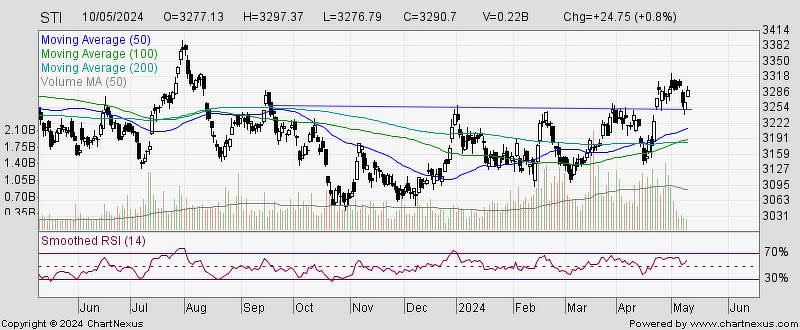Despite hiccups, local banks stay resilient with STI well-supported

Focus on banks and GEH continue to underpin STI; China Leaders ETF to test 2023 high.
All eyes are really on the local banks and the Straits Times Index as results, privatisation offers and buying interest continue to support them.
Oversea-Chinese Banking Corporation’s O39 (OCBC) sterling set of results were somewhat overshadowed by its offer to privatise the Great Eastern Holdings G07 (GEH) shares it doesn’t own. This has led some analysts to sound a trifle downbeat on OCBC because it is unlikely to pay out extra dividends from its ample common equity tier 1 levels of $39.5 billion, up q-o-q and y-o-y.
According to a Morgan Stanley update, the offer for GEH is high. “At 0.7x EV and 15.6x PER, the price is high, but it will be earnings accretive, and make management of the combined entity easier. The main concern for investors in OCBC will be the lower nearterm capital payout capacity as CET-1 ratio is lowered by 60 bps” the report says. On the other hand, GEH’s minority shareholders view the price as relatively low.
In the meantime, the STI’s short-term consolidation has found support at 3,250 although it touched an intra-day low of 3,241 on May 9. The next upside is at around 3,360. The STI ended the week of May 6-10 at 3,290, down two points week-on-week.
Kelvin Wong, senior market analyst at Oanda says the key risk that may derail the bullish tone seen in the Hang Seng Index is the revival of the deflationary risk spiral in China.
“If China’s consumer and producer inflation trends continued to plummet lower in April (data out on May 11), it suggests that the deflationary risk spiral is still intact which in turn can lead to a further erosion of consumer confidence followed by a potential deceleration in domestic demand.
“To make up for a tepid domestic demand environment, China's policymakers may opt for a devaluation of the yuan to boost export growth that in turn likely to trigger a currency war among nations that are dependent on exports; such beggar-thy-neighbour monetary policies are not conducive for a risk-on environment,” Wong cautions in an update.
Up to now, the uptrend in the Lion-OCBC Securities China Leaders ETF continues. With its $1.55 close on May 10, this ETF has reached its upside target, but its uptrend is intact, and it could labour on to the January 2023 high of $1.71.

See Also:
Click here to stay updated with the Latest Business & Investment News in Singapore
With 1% stake in Great Eastern, Malaysia's Sungei Bagan Rubber Co sees shares jump to record high
Great Eastern shares close 37.5% higher at $25.72, above OCBC’s $25.60 offer price
OCBC’s spike in new non-performing assets shows modest stress ahead: Bloomberg Intelligence
Get in-depth insights from our expert contributors, and dive into financial and economic trends

 Yahoo Finance
Yahoo Finance 